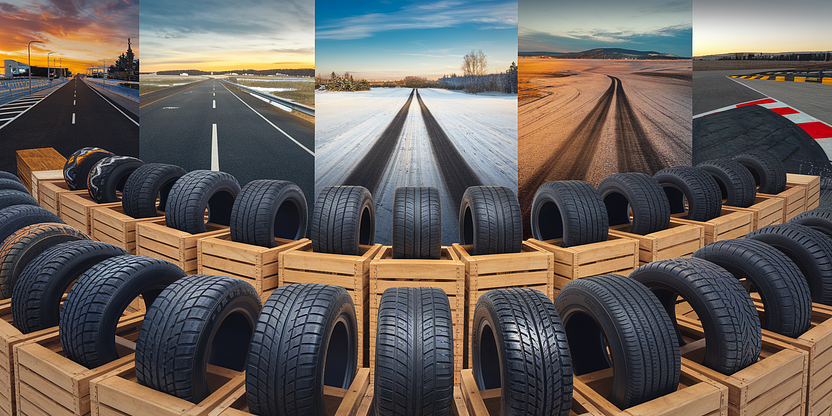
Tire Selection Checklist: Tread, Season & Size Guide (2025)
Tire Selection Checklist: Tread, Season & Size Guide (2025)
Introduction
Choosing the right tire is crucial for ensuring vehicle safety, performance, and fuel efficiency. Whether you're upgrading for the season or replacing your old set, our comprehensive 2025 Tire Selection Checklist provides everything you need to make an informed decision. We will cover essential factors such as tread patterns, seasonal compatibility, and sizing to help you navigate the plethora of options available in the market.
The Complete Checklist
[ ] Tread Patterns
Why This Matters:
Tread patterns are critical for grip, handling, and noise levels. The right pattern ensures optimal contact with the road.
What To Look For:
- Symmetrical for balanced wear
- Asymmetrical for dry and wet traction
- Directional for high-speed stability
Recommended Products:
Budget Option: Hankook Optimo H724 ($50)
Basic symmetric tread, good for everyday use, average wet performance
Best Value: Michelin Defender T+H ($110)
Asymmetrical for better grip, long tread life, reliable handling
Premium: Bridgestone Potenza RE-71R ($200)
Directional for track-like performance, excellent grip
Common Mistake: Buying based solely on price without considering tread type; match tread with typical driving conditions.
[ ] Seasonal Suitability
Why This Matters:
Different seasons demand different tire properties for safety and performance such as grip and rubber compound adaptability.
What To Look For:
- All-season for moderate climates
- Winter tires for snow/ice with deeper grooves
- Summer tires for heat and wet-road effectiveness
Recommended Products:
Budget Option: Firestone WeatherGrip ($70)
All-season, basic grip in all weather, but not specialized
Best Value: Continental PureContact LS ($130)
All-season, excellent balance for wet/dry
Premium: Pirelli P Zero Winter ($250)
Winter tire, exceptional in ice/snow, specialized design
Common Mistake: Using summer tires in winter; stick to all-season or switch to specialized options for safety.
[ ] Tire Size
Why This Matters:
Proper tire sizing affects vehicle handling, fuel economy, and speedometer accuracy.
What To Look For:
- Match size in the manual
- Check wheel diameter and width
- Ensure load rating and speed rating compatibility
Recommended Products:
Budget Option: Goodyear Assurance All-Season ($65)
Broad size options, basic performance
Best Value: Yokohama Avid Ascend GT ($120)
Versatile sizing, excellent tread life, moderate cost
Premium: Michelin Pilot Sport PS2 ($300)
Performance sizes, improves acceleration/braking
Common Mistake: Ignoring the manual and buying incorrectly sized tires, potentially causing handling issues.
Budget Summary
Option Budget Total ($) Mid-Range Total ($) Premium Total ($) Tread 50 110 200 Season 70 130 250 Size 65 120 300 Total 185 360 750FAQ
What are the different types of tire treads?
Treads can be symmetrical, asymmetrical, or directional, each suiting different driving conditions.Can I use all-season tires in winter?
Yes, but they may not perform as well as dedicated winter tires in severe conditions.How often should tires be replaced?
Generally every 6 years or when the tread depth is below 2/32 inches.What size do I need for my car?
Check your car manual or tire placard, typically located on your door jamb or glove box.Do premium tires last longer?
Often, yes. They typically have better technology and materials influencing longevity.
Final Checklist (Quick Reference)
- [ ] Tread Patterns
- [ ] Seasonal Suitability
- [ ] Tire Size
 Checklist Method
Checklist Method



